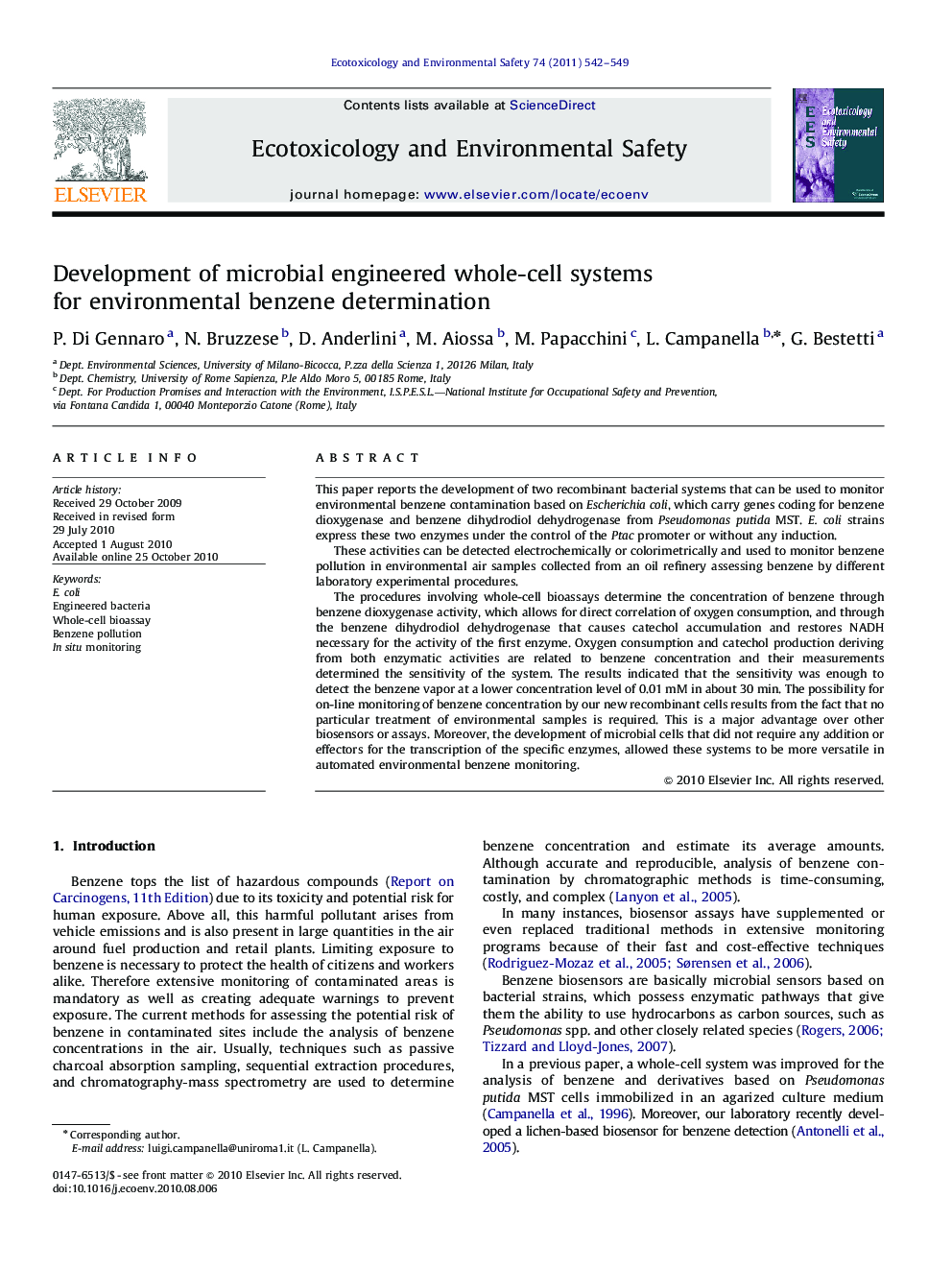| Article ID | Journal | Published Year | Pages | File Type |
|---|---|---|---|---|
| 6312569 | Ecotoxicology and Environmental Safety | 2011 | 8 Pages |
This paper reports the development of two recombinant bacterial systems that can be used to monitor environmental benzene contamination based on Escherichia coli, which carry genes coding for benzene dioxygenase and benzene dihydrodiol dehydrogenase from Pseudomonas putida MST. E. coli strains express these two enzymes under the control of the Ptac promoter or without any induction.These activities can be detected electrochemically or colorimetrically and used to monitor benzene pollution in environmental air samples collected from an oil refinery assessing benzene by different laboratory experimental procedures.The procedures involving whole-cell bioassays determine the concentration of benzene through benzene dioxygenase activity, which allows for direct correlation of oxygen consumption, and through the benzene dihydrodiol dehydrogenase that causes catechol accumulation and restores NADH necessary for the activity of the first enzyme. Oxygen consumption and catechol production deriving from both enzymatic activities are related to benzene concentration and their measurements determined the sensitivity of the system. The results indicated that the sensitivity was enough to detect the benzene vapor at a lower concentration level of 0.01Â mM in about 30Â min. The possibility for on-line monitoring of benzene concentration by our new recombinant cells results from the fact that no particular treatment of environmental samples is required. This is a major advantage over other biosensors or assays. Moreover, the development of microbial cells that did not require any addition or effectors for the transcription of the specific enzymes, allowed these systems to be more versatile in automated environmental benzene monitoring.
